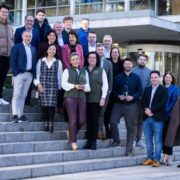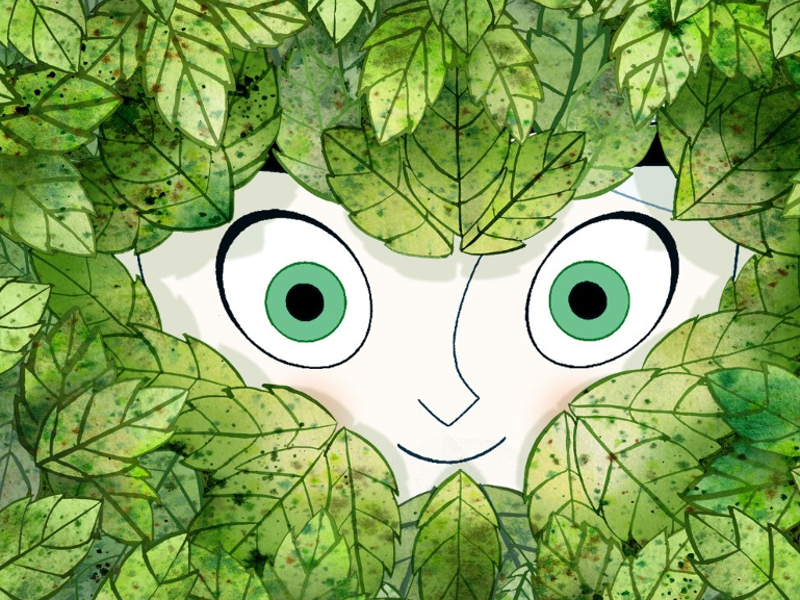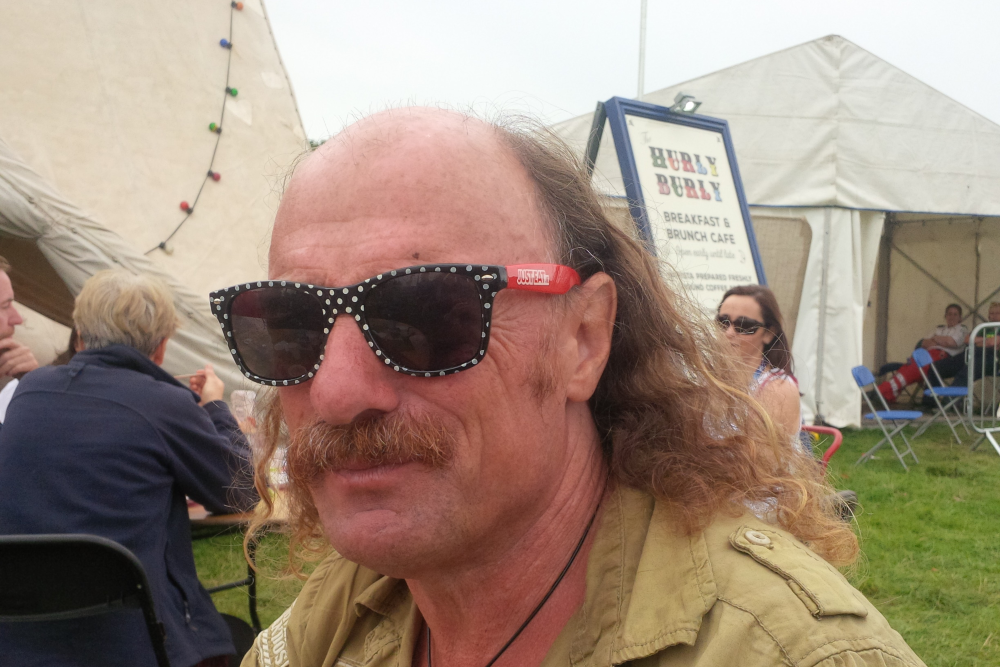Podcast Ep 292: StoryToys CEO Emmet O’Neill on firm’s LEGO Bluey breakthrough, building Ireland’s gaming success story and the future of interactive entertainment.
There’s something about the story of StoryToys that seems to feature siblings quite a lot. The Dublin company was originally established in 2008 by brothers Aidan and Kevin Doolan under the name Ideal Binary and later rebranded as StoryToys. They then brought in seasoned digital entrepreneur Barry O’Neill who had successfully sold his business Upstart Games to a Japanese gaming giant. And subsequently Barry’s brother Emmet O’Neill took the helm of the company and leads it to this day.
StoryToys hit the headlines recently when it emerged the business released a new mobile game to the various app stores based on the popular children’s TV series Bluey, developed in partnership with the LEGO Group and BBC Studios.
“I see us continuing to scale – we’ve been growing at 25% to 30% consistently the last few years”
The game is designed for children aged two to seven and features characters, builds, and props from the LEGO Bluey range. It includes four themed play packs at launch: Garden Tea Party, Go for a Drive, Beach Day, and Around the House.
The success was a reminder that the ambition for Ireland to be a key player in the multi-billion-dollar games industry never went away.
Staying in character
-
You can also listen to the Podcast on:
-
Spotify
-
SoundCloud
-
Apple
“Aidan and Kevin brought [my brother] Barry in to run the business because they were creative technologists rather than business-focused.
“Meanwhile, I was on the other side of the city making apps and games for kids for a different company, having a lot of success with them. But the business I was surrounded by didn’t necessarily have the acumen to grow out that aspect of their business. Barry was working with the Doolan brothers building a really interesting app business, but their content wasn’t necessarily where it needed to be.
“I think if we weren’t related, we probably would have joined forces a lot sooner. I also don’t think it hurt that there’s two sets of brothers in the same organisation to balance the books.”
O’Neill views licensing deals with major franchises like Bluey and The Very Hungry Caterpillar as a “real privilege” where you get to “step into worlds without having to live there.” This approach of treating licensing as creative collaboration rather than just transactional revenue has enabled StoryToys to create award-winning products that honor the original IP while building long-term relationships with major content owners.
“I had been making character-driven kids apps and had some success with them. It helped open the path for licensing content. The first big license we got was The Very Hungry Caterpillar – Eric Carle’s classic children’s book. We had three months from signing the contract to the release date, so honestly it wasn’t necessarily our best, most representative work.
“I really took it on board that wasn’t the app I wanted to make with this IP, because it’s an IP I absolutely care about. I read that book to my sister as a child, read it to my kids when they were children, and I love Eric Carle’s work as a designer.
“So we made an app called My Very Hungry Caterpillar, which was basically a bit Nintendo DS and Tamagotchi inspired – we were making a digital caterpillar that was your pet that came to life. It was a further extension of the book. Honestly, it won every sort of major award in the industry and set the company on a good initial trajectory.”
The successful development of Bluey for LEGO and the BBC is a pivotal moment for the business. It came down to O’Neill having an eye for what could work.
“My kids are a little older – they’re 23 and 25 – so they weren’t driving the Bluey enthusiasm in my household either. But it’s such a good show. About five years ago, I came across it and tracked down a couple of episodes. It was transformative – like in 1988 when The Simpsons started broadcasting, it was like ‘my god, you can actually do this with animation.’ Bluey had that same kind of reaction for me in a very different context.
“Through a mutual connection, I managed to get in touch with the show creator, and he basically said he had nothing to do with licensing. Joe Brumm, the show creator, writes every single episode – most kids shows have a writer’s room, but he literally writes every single episode to date. So I’m not surprised he didn’t have time to sort out licensing deals.
“He pointed us towards the licensing folk. We already had a pre-existing relationship with LEGO, and the LEGO Group brought us in on the fact that they were bringing out Bluey LEGO sets. So we tied these licensing partnerships together. We’re really good at making LEGO games, so several years later we got there – though it’s a long game. From first conversation to release, it can be an eight-year period, though we also did a Barbie app in just eight months to tie with the movie.”
I point out that Ireland has always had the ambition to be big in games and digital – we have a knack for literature, software, music, art as well as business – but that didn’t seem to happen … yet. Instead, we have helped hone the international operations of tech giants.
O’Neill believes there is still plenty to play for. “Firstly, the general games market – there will be a new Grand Theft Auto coming out in the not too distant future, and it will be seismic. The games industry is still about 5X the entirety of the film industry. It’s massive and thriving.
“You’re absolutely right that Ireland should have a bigger slice of that pie. I think we’ve managed to nearly get there a bunch of times. You mentioned Demonware and Havok – we’ve focused on underlying tech rather than content delivery. I think the nature of the companies we’ve had has been somewhat to do with funding.
“Our R&D tax credits are fantastic, but they don’t fund content – they’re interested in systems and underlying software infrastructure, not the generation of games content. We had periods before the financial crash where there was a lot going on, and that’s when Barry and others started pushing the government to introduce the games tax credit.
“But things move slowly in government circles. By the time the games tax credit came in about three years ago, it wasn’t really fit for purpose for the modern games industry. There are over 150 games companies on the island of Ireland now, though many are doing services work or quality assurance rather than creating original content.
“I think one issue is education – I don’t know that colleges are prepping people for a modern games industry. If you’re a software engineer stepping out of Trinity, you have your choice of really high-paying entry-level positions in big tech companies. If you have the choice of making half the salary making games versus joining a big tech company, you can see where that might be tempting.
“But anybody who gets into the game space tends to be passionate about it. They want to do something more interesting than being engineer No 5 billion in a big tech company.
“I actually think we could be at a moment where we start to see things turn around. There’s interest and enthusiasm at government level that there never has been before. I’m hoping we’ll see changes to the games tax credit that could be transformative. The IDA is really looking at the sector seriously.”
Joining the dots
O’Neill uses the parallel of the animation industry. “At one point, seven of the top 10 shows in the US were being produced out of Dublin. That harks back to Sullivan Bluth and others in the late 80s and early 90s. When those big companies left, every animation studio in the country was set up by graduates from the same colleges who had nowhere to go, so they set up their own businesses.
“The industry came about because the education was in place. We need more joined-up thinking across government bodies and colleges, and we are seeing green shoots there.”
Talent, O’Neill asserts, is the life’s blood of Ireland’s indigenous content creation sector.
“Because of that Venn diagram between the games industry and animation industry, we do have significant animation talent. Animation and games are even using the same engines at this point. Ireland has significant animation talent, storytelling, music – all those things Ireland has in spades.
“The actual game design and software engineering side is more of a challenge because we don’t have the history. We have talented software engineers but not necessarily talented games software engineers. I’ve been very happy with recent hires, though I am having to go to the UK and other countries, particularly for experienced game people with industry knowledge.
“It’s a lot easier now than two or three years ago when it was impossible to hire anybody. There are people who had been in contract employment looking for a more stable environment to learn, grow and develop their careers, and we’re able to provide that.”
So what makes StoryToys unique? Why is it bucking the trend?
Rather than the typical ‘release and leave’ model, StoryToys uses what O’Neill calls ‘evolving services’ – continuously adding content with monthly updates to existing products. Their Bluey game will have more than double the launch content within a year. This approach creates ongoing engagement, justifies premium pricing, and builds lasting customer relationships.
“I’m just back from a trip to LA, and it’s the first time I went into studios and was being pitched at rather than knocking on doors. It felt very different. I see us continuing to scale – we’ve been growing at 25% to 30% consistently the last few years.
“I’ll still stay focused on kids content, but I’m interested in aging up just a little bit because we have as many as 11 million monthly active users that we basically abandon at age seven or eight. So I’m looking at how we might age up into still pre-12 territory.
“The other focus is platforms. We’ve been doing a lot of work with Apple Arcade recently, and we’ve announced our first deal with Netflix. I want to get our content available in as many places as possible as a healthy alternative to things like Candy Crush or Marvel Strike Force that are inappropriate for children.
“We’ve already got most of the biggest licenses in the world, so there aren’t too many more we’ll be going after.
“So there’s new platforms, new licenses, and a lot of growth in our core 12 products. I think there’s a lot of untapped potential, and the future is looking pretty good.”
-
Bank of Ireland is welcoming new customers every day – funding investments, working capital and expansions across multiple sectors. To learn more, click here
-
For support in challenging times, click here
-
Listen to the ThinkBusiness Podcast for business insights and inspiration. All episodes are here. You can also listen to the Podcast on:
-
Spotify
-
SoundCloud
-
Apple





